
Limeira is a city in the eastern part of the Brazilian state of São Paulo. With a population of approximately 291,869 people and covering an area of 581 square kilometers, it sits at an elevation of 588 meters. The city is situated 154 kilometers from São Paulo, the capital of the state, and 1011 kilometers from Brasilia, the capital of Brazil. Limeira is conveniently accessible from São Paulo via two highways: Rodovia Anhanguera and Rodovia dos Bandeirantes.

Ibirapuera Park is an urban park in São Paulo. It comprises 158 hectares between Av. República do Líbano, Av. Pedro Alvares Cabral, and Av. IV Centenário, and is the most visited park in South America, with 14.4 million visits in 2017.

The Museu Paulista of the University of São Paulo, commonly known as Museu do Ipiranga, is a Brazilian history museum located near the place where Emperor Pedro I proclaimed Brazil's independence on the banks of Ipiranga brook in the Southeast region of the city of São Paulo, then the "Caminho do Mar," or road to the seashore. It contains a huge collection of furniture, documents and historically relevant artwork, especially relating to the Brazilian Empire era.
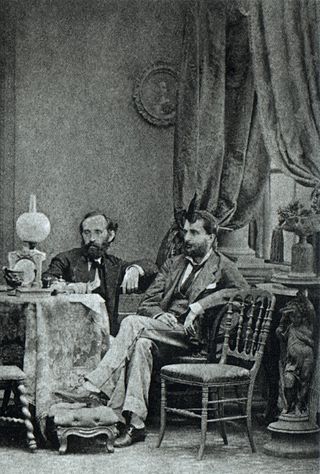
Alberto Henschel was a German-born Brazilian photographer born in Berlin. Considered the hardest-working photographer and businessman in 19th-century Brazil, with offices in Pernambuco, Bahia, Rio de Janeiro, and São Paulo, Henschel was also responsible for the presence of other professional photographers in the country, including his compatriot Karl Ernst Papf—with whom he later worked.

The Monument to the Independence of Brazil is a granite and bronze monument located in the Independence Park in São Paulo, Brazil. It is also known as the Ipiranga Monument or the Altar of the Fatherland. The monument is located on the banks of the Ipiranga Brook, on the historic site where prince regent Pedro proclaimed the independence of the country on 7 September 1822.
The Sintra Natural History Museum is a museum of natural history located in the historic center of the village of Sintra. The museum has both at national and international level due to the quality and rarity of many of its exhibits.
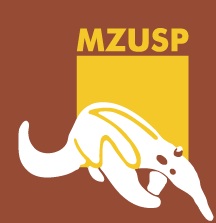
The Museum of Zoology of the University of São Paulo is a public natural history museum located in the historic Ipiranga district of São Paulo, Brazil. The MZUSP is an educational and research institution that is part of the University of São Paulo. The museum began at the end of the 19th century as part of the Museu Paulista; in 1941, it moved into a dedicated building. In 1969 the museum became a part of the University of São Paulo, receiving its current name.

Carmen Miranda Museum, located in the Parque Brigadeiro Eduardo Gomes, is a museum established in homage to singer and actress Carmen Miranda and open to the public since 1976. The museum was officially opened on the 21st anniversary of her death.

Events in the year 1936 in Brazil.
Dorath Pinto Uchôa was a Brazilian archaeologist and one of the founders of Brazilian Society of Archaeology. She specialized in the study of prehistoric coastal human settlements with a special emphasis on the study of prehistoric middens in the State of São Paulo, Brazil.
Adolf Franz Heep was a German-Brazilian architect. He is known for his work in São Paulo in the 1950s and 1960s, the period of verticalization of the city. His signature work is Edifício Itália, once the tallest building in the city of São Paulo at 165 metres (541 ft). It was designated a landmark building by the city of São Paulo in 1992. Heep also worked as an educator at Mackenzie Presbyterian University in São Paulo and later for the United Nations.
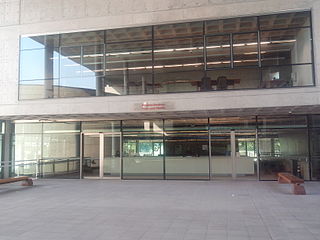
The Biblioteca Brasiliana Guita e José Mindlin (BBM) is a library in São Paulo, Brazil. The library was created to hold the Brazilian collection gathered throughout eighty years by José Mindlin and his wife Guita, began in January 2005 for important works for understanding the culture and history of Brazil compose the collection donated to the University of São Paulo in 2006. Among them, there are works of literature and history, travellers’ accounts, historical and literary manuscripts, documents, journals, maps, scientific and didactic books, iconography and artists’ books.

Santos Dumont Explaining His Air Ship to the Hon. C.S. Rolls is a short film made using a sequence of frames that shows the Brazilian inventor and pioneer aviator Alberto Santos-Dumont explaining the operation of his airship to Charles Rolls, the future founder of Rolls-Royce. It was filmed while Santos-Dumont visited London between 22 and 28 November 1901 and was screened on 3 December the same year, at London's Palace Theatre.

Militão Augusto de Azevedo was a Brazilian photographer and actor active in the second half of the 19th century. Militão founded the Photographia Americana studio in 1875, where his clients included Castro Alves, Joaquim Nabuco, Dom Pedro II, and Empress Teresa Cristina. His rates were among the lowest in the city. The location of the studio in front of the Church of Our Lady of the Rosary, frequented mainly by the Afro-Brazilian residents, led to his photography of prominent Black citizens of Brazil. He depicted Afro-Brazilians not as slaves, but as ordinary citizens. His other works were of singers and theater artists.
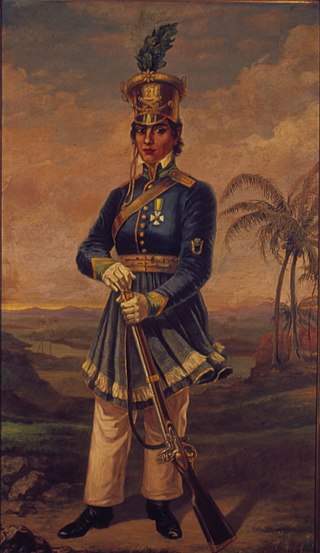
Portrait of Maria Quitéria de Jesus Medeiros is a painting by Domenico Failutti (1872-1923). Failutto, an Italian who worked in Brazil between 1917 and 1922, completed the work in 1920 on the occasion of the centenary of the Independence of Brazil. It depicts Maria Quitéria de Jesus (1792-1853), a combatant and folk hero in the campaign for the Independence of Bahia, a conflict part of the larger Brazilian independence movement.
Guia da Secção Histórica do Museu Paulista is a guide book written by the historian and museum director Afonso d'Escragnolle Taunay. It is the first comprehensive description of the Museu do Ipiranga, commonly known as the Paulista Museum, in São Paulo, Brazil. It solidified the emphasis on historical materials in the museum, a position promoted by Taunay over his long tenure. The publication outlines the history, exhibition rooms and areas, and research conducted by the museum.
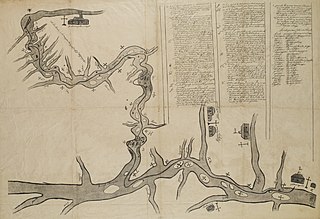
The Map of Céspedes Xeria is a map produced by Dom Luis de Céspedes García Xería, a 17th-century Spanish military officer. The map is dated November 8, 1628. It depicts the path that Xeria traveled between the village of São Paulo de Piratininga, now the modern city of São Paulo, to Ciudad Real de Guayrá, Province of Paraguay. Ciudad Real de Guayrá was a Spanish-held city in the present-day Brazilian state of Paraná. Xeria travelled using the Tietê and Paraná rivers from July 16 to September 18, 1628. The dimensions of the Map of Céspedes Xeria are 118 centimetres (46 in) x 79 centimetres (31 in). The Map of Céspedes Xeria is the first known of the interior of the state of São Paulo and the first to establish a cartographic representation the wider Southeast region of Brazil. It additionally provides the earliest representations of the Tietê and Paraná rivers.
Guia pelas Colleccões do Museu Paulista is a book by Rodolpho von Ihering, organized by Hermann von Ihering, on the collections of the Museu Paulista, particularly those pertaining to zoology. It was released in 1907, by Cardozo, Filho & Cia., from São Paulo.
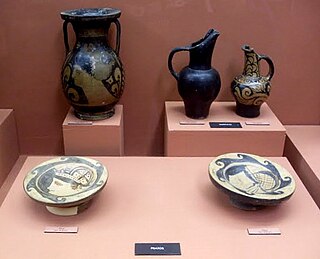
The Museum of Archeology and Ethnology of the University of São Paulo(MAE-USP) is a department of the University of São Paulo. Focused on research, teaching, and cultural and scientific diffusion. It was created in 1989, from the dismemberment of the archeology and ethnology sectors of the Museu Paulista, to which the collections of the Institute of Prehistory of USP and the Plínio Ayrosa Collection were merged. It is located in Cidade Universitária (campus), in the West Zone of São Paulo.
José Wasth Rodrigues was a Brazilian painter, drafter, illustrator, ceramist, teacher and historian. He was the uncle of the also illustrator Ivan Wasth Rodrigues.














